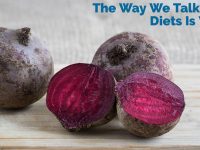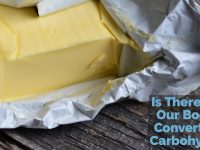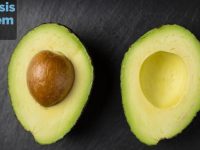Protein is ubiquitous. Unless you’re poor and in a developing country where the staple crop is extremely low in protein, there’s no doubt that you’re getting enough to survive on a daily basis.
But despite the low bar for sufficiency, not all proteins are equal drivers of muscle protein synthesis. To reach this higher bar, you need to consider the quality of a protein—because while literally every living organism contains proteins, those proteins are not guaranteed to be rich in the amino acids the muscles need.
I recommend getting 120 grams of protein per day, but that figure is really just a proxy for getting enough of the essential amino acids (and in particular leucine) to drive muscle growth. If your protein choices are consistently low in essential amino acids (EAAs) and leucine, then muscle protein synthesis will be limited. That’s why I also stipulate that those 120 grams should mostly come from high-quality protein sources—-protein sources that are rich in EAAs and leucine.
So where do different protein sources fall quality-wise? Let’s take a look.
Determining Protein Quality
Before we begin, we should determine exactly what “high-quality” means. Unsurprisingly, there are a few common measures including the Protein Efficiency Ratio, the Biological Value, and the Protein Digestibility Corrected Amino Acid Score (PDCAAS). Here, we’re going to use the PDCAAS as it’s considered the most up-to-date science-wise.
Proteins are assigned a PDCAAS based on how limited in essential amino acids and how digestible they are. Proteins that are rich in all the amino acids and are easily digested—like meats, eggs, dairy, and some plant proteins—score somewhere between a 90 and a 100 on the PDCAAS scale. 100 is the technical upper limit, representing a protein that perfectly matches the reference protein (usually egg) in amino acid completeness and digestibility.
On the other hand, proteins with lower PDCAASs are either poorly digested or have limited essential amino acids; the worst-quality proteins are both. Most proteins range somewhere in the middle, though, and digestibility tends to be high so it’s usually a limiting amino acid that is the problem.
The PDCAAS makes a lot of sense for determining the basic value of a protein in meeting humans needs, and can generally be used to estimate growth from a given protein source. A limitation, however, is that the PDCAAS is computed with a growing child’s needs in mind, which may be different than a teenager’s or adult’s when they are interested in muscle growth. It is, however, a good starting point because muscles will need all the essential amino acids, so muscle growth and repair will be hindered if a protein is severely limited in one.
To significantly boost muscle protein synthesis, a protein should also be high in leucine, which the PDCAAS does not account for except in the case where leucine is the limiting amino acid. Leucine is the amino acid “trigger” for the cascade of events that lead to muscle protein synthesis, and without sufficient leucine in a meal it’s likely that muscle protein synthesis will be limited—not zero, of course, but far from maximal.
Some people (including the author of the above paper, Dr. Layne Norton) have suggested there is a “leucine threshold” of approximately 2-3 grams, meaning you need at least that much to cap out muscle protein synthesis. Other authors have found that the amount is probably closer to 1.75 grams except in the elderly (whose muscles become resistant to leucine).
Based on the data we have from whole protein trials (the ones described in this article), it seems more likely to be the lower 1.75 grams (or even 1.5 grams) than the higher 2-3 grams because it would take at least 30 grams of most high-quality proteins to reach that level, but only 20 grams to reach the lower threshold. Since 20 grams appears to be all that is required to maximize muscle protein synthesis, there’s solid (if indirect) indication that you probably don’t need more than 1.75 grams per meal and possibly as little as 1.5 grams.
Some final things we need to consider when evaluating the quality of a food as a protein source is how much protein it offers per realistic serving and how protein-dense the food is. Some foods (like many vegetables) are protein-dense by calorie, but contain so few calories per serving that you’d need to eat over a pound of food just to reach 20 grams. Other foods (like nuts) are more energy-dense and therefore offer more protein per serving, but to get a full 20 grams you’d need to consume over 600 calories of food (which is 25-50% of the average person’s basal needs).
In the end, all proteins are judged according to the following characteristics:
- PDCAAS value (a proxy for completeness and digestibility)
- Amount of leucine per serving
- Amount of protein per serving
- Number of calories per 20 grams of protein.
The highest weight is placed upon the PDCAAS value (when known) and the leucine value. In most cases, the latter two qualities play little role because there are few high-quality proteins that are either unreasonably high in calories or serving size.
I don’t suggest this is an absolutely perfect system, but it doesn’t need to be perfect—it just needs to be accurate enough to allow you gauge what proteins are better or worse. In this, it performs superbly.
A Note About My Sources
The majority of the figures below come from two sources:
- For the PDCAAS value, I used this source (which is itself a compilation of the PDCAAS information from a number of sources) and some extraneous sources. On occasion, when a PDCAAS value cannot be found, I use the PER (protein efficiency ratio) and cross-reference it to other foods with known PDCAAS. The PER is not considered to be as inline with human growth as the PDCAAS (it’s determined from rat data), but it’s close enough to roughly determine quality. If I used an extraneous source for the PDCAAS, I link to it separately in each section.
- For the protein per serving and leucine values, I used the USDA nutrient database.
In a few cases there is no data on PDCAAS, PER, or protein quality in general. In such cases, I compared as best as possible to similar foods. Usually these foods were of low-quality by other measures, though, such as leucine content or protein per serving, so it’s unlikely any food is downgraded unfairly.
A Note About “Completeness”
Most animal proteins are said to be “complete” in that they offer all the essential amino acids in the amounts that humans need for optimal growth. Most vegetable proteins are said to be “incomplete” because they lack some essential amino acids. Usually it’s then recommended to mix veggie proteins to form “complete” proteins.
To begin with, let me challenge the notion of “completeness” in general. Nearly all vegetarian proteins contain sufficient amounts of each essential amino acid for normal growth and development. Only some proteins are so low in certain essential amino acids that they would not be suitable for growth.
Second, the idea of mixing proteins is outdated. It’s generally recognized that the body can store excess essential amino acids for later use when the missing ones are obtained, so eating different proteins across the day is likely to fill any gaps.
Third, the best vegetarian sources of protein tend to be the best sources for all essential amino acids, even the ones they’re supposedly limited in. A cup of beans may be relatively low in methionine and cysteine compared to a cup of some cereal grain, but because that cup of beans has 2-3x the protein as the cereal grains, it ends up have more total methionine and cysteine.
If you’re eating cereal grains anyway (and there’s no reason you shouldn’t), then you may as well tally up the protein from them—but if the only reason you’re adding cereal grains to your beans is to “boost” the sulfur-containing amino acid content, then you may as well just add more beans.
Finally, we only really have good data on how much of each essential amino acid we need for daily maintenance (or growth), not muscle repair and development—it could very well be that some essential amino acids are more necessary than others. Since we know that leucine is probably the most important, though, it seems safe to assume that as long as the leucine content and PDCAAS are both good then the protein will be comparable to any other high-quality protein for muscle growth. It also means that some proteins may be better than I otherwise believe.
High-Quality Protein Sources
The following foods are all considered to be “high-quality”, meaning they all…
- Have PDCAAS scores of at least 70
- Provide at least 1.5 grams of leucine per 20 grams of protein
- Can realistically supply 20 grams of protein in a meal.
Though there are certainly variances in the absolute quality of the following sources, you can’t go wrong if you get the majority of your protein from one or another.
All Meat & Most Seafood
Red meats, poultry, pork, fish and crustaceans (shrimp, crab, lobster) are all easily digested, provide at least 1.6 grams of leucine per 20 grams of protein, and are extremely protein-dense (it only take 3-4 oz [85-113 g] to get 20 grams of protein).
Dairy & Eggs
Dairy and eggs are the “standard” high-quality protein. Dairy (in particular whey) is extremely high in leucine, and it’s easy to get 20 grams of protein.
Legumes
Legumes are often thought less of by meat-eaters, but the reality is that most legumes are still a great source of protein. Soybeans and soy products are far and away the most protein-rich, but beans and lentils make up for it by being slightly richer in leucine. No matter which legumes you choose, it’s easy to get enough protein (and leucine).
Protein Powders
Most common protein powders—including whey, casein, egg, soy, pea, and rice—are high-quality. While the first four should come as no surprise, even pea and rice are excellent sources because they contain plenty of the necessary essential amino acids and leucine and are easily digested thanks to the processing they undergo (which removes most or all of the protein digestion inhibitors naturally found in many plants).
Mostly High-Quality Protein Sources
There were a few proteins that very nearly qualified as “high-quality”, but which I ultimately decided did not belong so as to not distract from the slightly better sources. These proteins have at least two characteristics of the high-quality proteins in spades, but lack in the third.
Molluscs
Molluscs are equally high-quality in terms of leucine and PDCAAS as any other animal-based food, but tend to be low in protein per ounce or gram. A 4 oz serving of molluscs (which include clams, oysters, scallops, and squid among others) has only 14 grams of protein on average, so if you are getting your protein from them, you may need upwards of 6-8 ounces (170-227 g).
Chickpeas
Chickpeas are probably better digested than other legumes (including soybeans), and they have just as much protein as most beans, but they are very slightly lower in leucine than normal with an average of 1.4 grams per 20 gram serving of protein. That means to get 1.5 grams of leucine from chickpeas, you would need 21.5 grams of protein—not a tremendous difference to be sure, but perhaps one to be aware of.
Cashews
Cashews have an exceptionally high (for a nut or seed) PDCAAS of 90, and are also high in leucine with 1.6 grams per 20 grams of protein—but to get 20 grams of protein from them you would need to eat almost 4 oz (113 g), which is over 620 calories. This isn’t practical, but cashews can still be a viable high-quality source of protein when mixed with other foods.
Medium-Quality Protein Sources
Medium-quality protein sources are not exceptional in any of the characteristics of a high-quality protein. They will have one to two of the following characteristics:
- Have PDCAAS scores of at least 70.
- Provide at least 1.5 grams of leucine per 20 grams of protein.
- Can realistically supply 20 grams of protein in a meal.
When combined with a high-quality protein, medium-quality proteins can still contribute to the total—but you will want to opt for slightly greater protein intake during a given meal (20-30 grams). Since many of these are foods you’d normally eat, you can easily compensate your high-quality proteins down when including them in a meal.
Grains & Pseudograins
Grains and pseudograins are typically medium-rich in protein, but it would still take a lot (as in 2-4 cups) to get enough protein solely from them. Additionally, many grains have moderate PDCAAS values of 50-75. The exception being quinoa, which is unfortunately lower in leucine than the other grains.
Nuts & Seeds
Most nuts and seeds (including the legume peanuts) are decent sources of protein, with moderate PDCAAS values in the range of 55-70. They also tend to be high in leucine, though their caloric-density makes them hard to eat alone for protein.
(Additional PDCAAS values for nuts and seeds came from here or were estimated from here.)
Vegetables
Few vegetables can really be called even medium-quality protein sources, but one that should be mentioned is kale since it has a PDCAAS of 98 and an uncharacteristic 1.4 grams of leucine per 20 grams of protein.
Since there isn’t another good place to mention this, the mycoprotein that makes up the meat substitute quorn could also be considered a medium-quality protein source since it has a PDCAAS of 99 and is rich in total protein (as a protein concentrate), though it is unfortunately very low in leucine.
Low-Quality Protein Sources
Low-quality protein sources either fail all the characteristics of a high-quality protein, or they fail spectacularly in at least one characteristic. Most are not particularly rich sources of protein, so it would be hard to get enough protein from them anyway.
All of the below foods are still great foods that you should include in your diet—just not as a main source of protein!
Almonds
Almonds are a surprisingly poor source of protein. Though just as rich in protein as other nuts and not too low in leucine (1.4 grams per 20 grams of protein), almonds have a PDCAAS of only 23-25 due to extreme limitations in essential amino acids (mostly the sulfur-containing methionine and cysteine).
Most Vegetables
Most vegetables are not protein-dense (it would take 4+ cooked cups to get 20 grams of protein) and also tend to be low in leucine (1.2 grams of leucine per 20 grams of protein). Their protein is likely relatively well-digested, but official PDCAAS data is missing for most veggies.
Mushrooms
Alas, alack, mushrooms are not the superb source of protein that their meat nature (and common substitution on vegetarian plates) would imply. The PDCAAS data we have on some varieties shows they have PDCAAS of less than 50, and they have only around 0.8 to 1.1 grams of leucine per 20 grams of protein.
Don’t Even Bother with These!
The following are commonly used proteins that are pure and simple not worth it. While they may have some health advantage (they’re still made up of “food”), they are not going to help you repair or build muscle—and honestly, there are probably better foods to eat even then.
Beef Protein Isolate
Beef Protein Isolate is a “paleo-friendly” protein powder that is really just jazzed-up gelatin. It is extremely low in leucine (0.65 grams per 20 grams of protein) and low in essential amino acids in general with only around 21%—even the worst offenders above clock in around at least 30%, and all the high-quality proteins are around 40-45%. Some beef proteins claim to be rich in BCAAs, but it’s likely they’re either 1) lying or 2) fortifying their product with freeform BCAAs. It’s also extremely salty and supposed to taste gross (I’ve never tasted it). Not worth it!
Hemp Protein
Hemp Protein is (or was) a relatively cheap protein and is high in fiber to boot. Unfortunately, that fiber takes up so much space you essentially have to use double just to get 20 grams of protein. Even then it has a low PDCAAS of around 46-51 (63-66 if it’s hulled) and—like the beef protein isolate—only 0.65 grams of leucine per 20 grams of protein. On the upside, it has a pleasant flavor….
The Great Unknown
There are many more proteins out there that have simply not been evaluated for their quality by any standard. While I could try to account for it with essential amino acid and leucine content, ultimately it’d be a random guess because their PDCAAS could be anywhere from great to terrible.
Thankfully, there aren’t any unknown proteins commonly used as a protein source—and it’s easy enough to find high-quality proteins regardless of your diet that it shouldn’t matter anyhow. Even if you’re vegan and commonly dip into medium-quality sources (in greater amounts), it’s unlikely you’re basing your diet around banana protein.
Wrapping-Up Protein Quality
There are plenty of high-quality proteins out there, and most common proteins are at least of medium quality. Only the occasional “protein source” is so poorly digested or so poor a source of essential amino acids or leucine to qualify as a low-quality.
Ideally, your protein should come from high-quality sources, but medium-quality sources work just as well if in larger amounts. Since 20 grams of protein is astoundingly easy to get when you factor in the protein from all the parts of your meal, it’s likely you’re already getting plenty.
The most basic rule could thus be summed up as follows:
- If most of your protein is high-quality, aim for 20 grams per meal.
- If most of your protein is medium-quality, aim for 30 grams per meal.
- If most of your protein is low-quality, change your diet to include more medium- and high-quality sources.
It’s as easy as that!
There’s yet more to cover on protein (such as myths and gimmicks), but that is a topic for another post. If you’re not sure where I got that 20 g figure from, go back and read my series on protein.















Thank you for your excellent research-based and insightful overview of protein quality. The guidance in “The Best Sources of Protein” should be followed by every health conscious adult. I am a 56 year old female high school chemistry teacher with a 30+ year old degree in nutrition science. Most days I eat a vegetarian diet although I do eat fish occasionally and poultry a few times a year. My focus is to minimize the muscle loss associated with aging while preventing weight gain. While tracking my diet I was surprised to learn most days my carbohydrate rich diet is too low in total protein. In an average week I run about 7 miles and bike about 20 miles. Maintaining muscle mass, balance, weight and strength are not easy goals to achieve but you have helped me. Thank you.
Im not a climber but a heavy weight lifter. I figured this was another website that would say animal protein is great, plant based is inferier but was pleasantly surprised. You were very thorough and showed no bias. I laughed about the hemp part. Hemp is great protein but gritty and heavy and unless you buy the expensive types like Manitoba Harvest hemp pro70 then its too much volume for grams protein like you menioned. Cheers rob
What do you think of pumpkin seed protein powder?
It should be a good source, though it’s hard to know for sure since I couldn’t find any amino acid breakdowns of the powders themselves. The protein in pumpkin seeds is of moderate quality, mostly held back by the slightly poorer-than-would-be-hoped digestibility (similar to most whole nuts and seeds thanks to protein-digestion inhibiting factors) and the difficulty one would have in eating 20 grams of protein from whole pumpkin seeds. The isolated protein wouldn’t have these setbacks, so it should be as high a quality of a source as any soy, pea, or rice.
I found this per 100g, giving 1.4g Leucine per 20g:
Leucin: 7g, Isoleucin: 3.8g, Valin: 2.2g, Lysin: 3.4g, Methionine: 2.2g, Phenylalanine: 5g, Threonine: 3g, Tryptophan: 1.4g, Alanin: 7g, Arginin: 14.6g, Asparagin: 9.4g, Cystein: 1.2g, Glutamin: 21.6g, Glycin: 5.6g, Histidin: 2.8g, Prolin: 3.7g, Serin: 4.3g, Tyrosin: 1.8g | EAS: 28% (ohne Cystein und Histidin); BCAA: 19%
source: https://whey-protein.ch/bio-kuerbiskern-protein/
12.3g fat and 15.8g fiber may not be ideal but I want a vegan powder to ramp up my breakfast oats to 20g and pea is not a good fit flavour-wise.
Interesting; the pumpkin seed proteins I found at US retailers were far lower in fiber and fat—they were concentrates or isolates. If fat and fiber remain to such a large degree, I would assume digestion and absorption would be impacted as well, and that the powder wouldn’t be as good a source of protein as other plant-based powders like soy or rice. I don’t know the manufacturer’s process, so I could be wrong, but it does suggest it’s less processed and so less likely to have been refined to an easily digestible and absorbable form.
Microalgaes deserve proper consideration here. I’m talking about Spirulina, Chlorella, Wild Blue-Green… I have heard that they offer extremely high quality and easy to digest protein, but don’t know the breakdown as to the characteristics of that protein.
I can’t find any information on the PDCAAS of cyanobacteria, so we can’t be sure about their digestibilities, but it’s likely they’re decently well-digested, and they do have good amino acid profiles, so they would probably be a good source of protein. The problem is the amount you would need to consume to get enough protein from them. In the case of spirulina, you would need about 5 tablespoons—this is about 15-30x more than most people would consider palatable when mixed with 8 ounces of fluid. Then there’s also the cost, since you would need so much! So, while I wouldn’t dispute that cyanobacteria are a technically good and high-quality source of protein, I would say they’re not a particularly practical source.